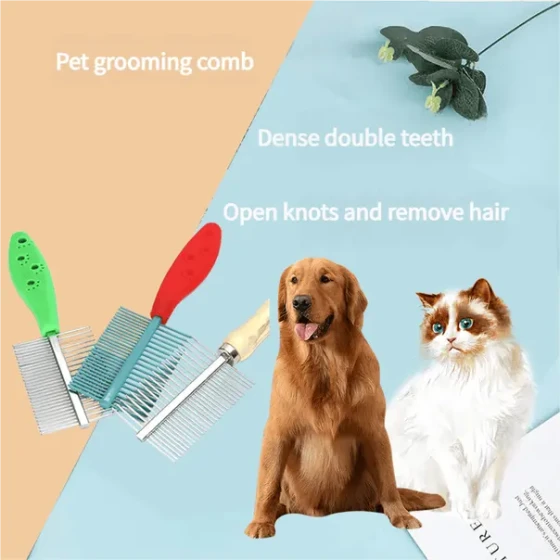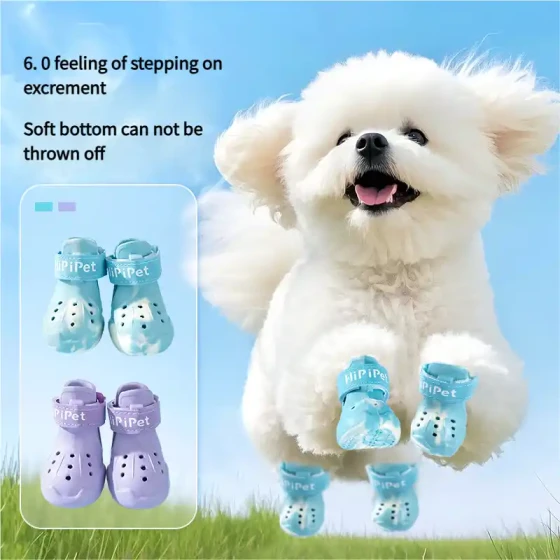Types of Dog Leashes and How to Choose

For owners who take their dogs out for walks every day, choosing a properly sized leash for safety is necessary. The pet market has many types of dog leashes, and for different breeds, coat types, temperaments, and sizes of dogs, selecting a leash is also important. So how to choose a leash suitable for your dog, please see the introduction below.
1. Collar
Collars come in leather, nylon, and metal types. You should select a collar length appropriate to the dog's neck width. After putting on the collar, the dog should feel comfortable and the collar should not pinch the fur. The collar should not be too tight; you should be able to easily fit two fingers inside after fastening. Puppies should have their collars removed when unattended to avoid choking hazards from catching on objects. Long-haired dogs are best not worn collars for extended periods to avoid flattening the neck hair, which can affect aesthetics.
2. Harness Leash
The harness leash is designed more humanely to prevent dogs from slipping out of neck collars and is the most common type used by dog owners. Its chest harness design also makes it easier for owners to control the dog. Therefore, harness leashes are suitable for all dog breeds.

Leash
3. Short Lead
Generally used in combination with collars or harnesses to keep dogs walking close beside the owner. It provides better control and is suitable for larger or temperamental dogs. However, it requires the owner to have very good control and not be dragged around by the dog.
4. Chain Leash (P-Leash)
The P-leash comes in different thicknesses and should be chosen based on the dog's size. The most important aspect is the correct way to wear it. Assuming the person is on the right and the dog on the left, the leash should form a “p” shape when put on the dog, so the pulling force direction is correct; if it forms a “口” (square) shape, the direction is completely wrong and pulling will dangerously choke the dog’s neck, potentially injuring the trachea. Of course, if the person is on the left and the dog on the right, the leash should be worn reversed in a “q” shape. Besides correct orientation and position, the chain should be well lubricated to avoid injuring the dog.
5. Headcollar Walking Lead
Originating from a horse’s bridle, this type of leash provides better control over the dog. The dog’s movement direction is generally decided by the head's direction, and the headcollar lead controls behavior by changing the dog’s head direction with light pressure, preventing the dog from rushing forward. When worn, the neck strap should be positioned at the base of the jaw, not the throat. Dogs may feel uncomfortable with the strap over the nose initially, but this improves quickly with gradual training.

Leash
6. Retractable Leash
This is the so-called semi-control collar, actually a combination of collar and P-leash. Its control strength and comfort fall between the two. Choose according to your dog’s characteristics. Retractable leashes come in large, medium, and small sizes, with ergonomic handles fitting comfortably in hand, a control button to decide whether to extend the line, and an automatic retracting function. The key invention is the strong nylon cord, which is thin yet durable. The quality of a retractable leash depends on this cord. When selecting, focus on the needed extension length and the weight capacity for your dog’s breed.
7. Anti-Bark Collar
There are mainly two types: one is an electric shock collar installed at the throat, which emits a current when the dog barks; the other emits an odor that dogs cannot tolerate. Both cause immediate discomfort and reduce barking.
When choosing a leash, be sure to check for "qualified mark," "barcode," "manufacturer information," and whether the packaging content is complete and standardized.
Dogs can be playful and may move constantly while wearing a leash, so owners should remain calm and seek assistance if needed. Practice repeatedly to get the dog accustomed. Some dogs may develop a habit of biting the leash, which owners should immediately stop and reprimand; ignoring it will cause the dog to get used to it.




-560x560.webp)
